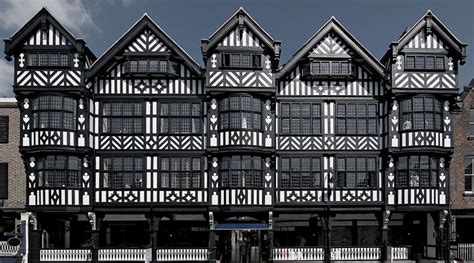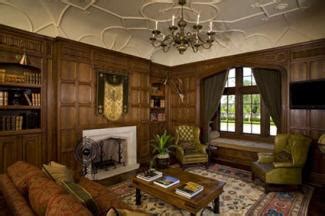tudor style building | characteristics of a tudor house tudor style building This simple cottage, Ascott House in Buckinghamshire designed c. 1876 by George Devey, is an early example of Tudorbethan influence Half-timbering, Gothic Revival tracery and Jacobean carved porch brackets combine in the . Kamu dapat menggunakan bahan-bahan alami yang ada disekitar rumah seperti cuka, perasan jeruk lemon, dan minyak zaitun. Bahan-bahan alami tersebut ternyata sangat ampuh dapat membantu membersihkan bahan kulit kesayangan kamu. Lalu bagaimana cara membersihkannya?
0 · who created tudor architecture
1 · tudor interior design characteristics
2 · tudor colonial style home
3 · traditional tudor style homes
4 · traditional tudor house
5 · pictures of tudor style houses
6 · famous tudor architects
7 · characteristics of a tudor house
Cardi B, La La Anthony, and Meghan Thee Stallion all have the same Louis Vuitton tie-dye-looking handbag in different colors. Here's a look at the luxury bag.
What is a Tudor-style house? Known for pitched gable roofs, decorative wood trim, and old-world appeal, this architectural style was once a .Tudor style, type of British architecture, mainly domestic, that grafted Renaissance decorative .
Tudor architecture is a type of architecture that was popular in England during .The Origins of Tudor Architecture. Key aspects of the Tudor period that shaped this .This simple cottage, Ascott House in Buckinghamshire designed c. 1876 by George Devey, is an early example of Tudorbethan influence Half-timbering, Gothic Revival tracery and Jacobean carved porch brackets combine in the .
Here are some notable variations within the Tudor architectural style: 1) Elizabethan Tudor. The Elizabethan period transitioned from the earlier Tudor style to the more intricate and decorative Elizabethan Tudor. Buildings from . Tudor-style houses were typically designed with interiors that complemented the exterior in terms of design style. The asymmetry of the front facade of the house also enhanced the interior layout . By the 1920s, modern building practices in the United States evolved to rely on things like dimenal lumber, steel, and concrete block, so the use of brick, stone, and half timbers on a Tudor Revival were for aesthetics, rather than .
“Tudor architecture is an exquisite blend of medieval and Renaissance influences, a unique expression of grandeur and grace that captures the essence of the Tudor period. These historically significant buildings stand as testaments to the creative genius and cultural richness of the era.” Dr. Lucy Worsley, Chief Curator, Historic Royal Palaces. Tudor Revival architecture refers to the revitalization of the Tudor style, which happened in England and the United States from about 1860 to 1940. In 1860, British architect, Norman Shaw, built a Tudor Style mansion called Craigside.This revival phase went on till the advent of the Second World War, when patriotic feelings favored American-style buildings, and the Tudor style was pushed to the brink. Other factors that led to its decline were that the houses required expensive materials, and .
Building materials: With their intricate details, exterior style, and interior design, the building materials necessary to properly update a Tudor home’s features may make repairs more expensive. You’ll need to find someone experienced with older homes if you need to restore your Tudor style house to its former glory.

who created tudor architecture
Tudor architecture, a style that flourished in England from the late 15th century to the early 17th century, is one of the most recognizable and beloved architectural styles in British history.Spanning the reigns of the Tudor monarchs (1485-1603), this architectural period left an indelible mark on England’s built landscape, from humble cottages to grand palaces.Tudor Style House Characteristics In Foucus : The “Jettied” Upper Story. A unique and often overlooked feature in Tudor-style homes is the “jettied” upper story. This architectural technique involves extending the upper floors slightly beyond the lower ones, creating an overhang. The jettied design not only allowed for more interior .The Perpendicular style had already broken away from the European mainstream of late Gothic. In Tudor times it developed fan vaulting, for example in the cloisters at Gloucester Cathedral and Henry VII's magnificent Lady Chapel at Westminster Abbey. The characteristic Tudor depressed arch can be seen in both ecclesiastical and secular buildings.The Tudor style fell out of popularity around World War II when a resurgence of patriotism encouraged an appreciation for a more American style, that is, Colonial Revival. Tudor architecture was also expensive to build, not easily replicated and prone to maintenance issues. One of the best examples of a Tudor style house in Montgomery County .
The style resurfaced in the United States in the early 1900s in what was called the Tudor Revival period during which time the Tudor-style house became especially prevalent among the wealthy . History of Tudor Style House. Tudor homes date back to Medieval England, with the style becoming popular during the 15th century. As the Medieval era progressed, three centuries later, Tudor style homes found their way to America. They were mostly built in the US between 1890 and 1940 before the Colonial Revival homes took over as the new standard.
Today the Tudor style house is making a comeback, a lot of people still love the appearance. The modern Tudor uses the same design elements but has far more space and has the modern updates people have become accustomed to, .
Origins of the Name: The style is named after the Tudor dynasty, which included notable monarchs like Henry VIII and Elizabeth I. However, many features of what we now consider “Tudor” architecture were developed before or after the Tudor period. Gardens and Surroundings: Many traditional Tudor houses feature lush, elaborate gardens, which are a staple in many . Tudor architecture came about as the final building design style of the medieval period. While the style’s name is attached to the dynasty that began with King Henry VI and ended with Queen Elizabeth, Tudor architecture .Tudor Style House Characteristics. With an asymmetrical facade comprised of overlaying roof gables, Tudor style homes are resplendent in detail. Their signature exterior feature is an exposed . Tudor-Style House What is a Tudor-style house? Updated June 25, 2024. Tudor is an architectural style that was prevalent in England and Wales during the latter part of the Middle Ages, beginning .
Tudor-style buildings are still being constructed, and the use of modern technologies and sustainable materials is helping to ensure their longevity. By preserving and restoring historic Tudor buildings, we can continue to appreciate their unique beauty and character, while also contributing to the preservation of cultural heritage.Tudor architecture is an architectural style that emerged between the 15th and 16th centuries when the Tudor family came into power in Britain.It is a transitional architectural style with an amalgamation of characteristics of Renaissance and Gothic architectural styles. The most prominent feature of a Tudor-style building is the exposed wooden beams and the . There are many interesting characteristics of an English Tudor house that identify its style and age. The following is an overview of some of the most notable characteristics of this type of house. Tudor House Roofs . English Tudor houses always have a steeply pitched roof. These were covered in either thatch, tiles, slate, or clay. One of the most iconic spots in a Tudor-style house is the open-log fireplace. Decorate the mantle with vases filled with fresh flowers, books, family heirlooms or memorable photos. The wall surrounding the fireplace mantle can be used for open shelving and books can be stacked to make a great impression on the house guests. Ornate stone or .
History of Tudor-style homes. The modern Tudor-style house is based on the original Medieval and Renaissance-style dwellings in England during the 15th and 16th centuries. This time period coincided with the reign of the House of .Tudor Revival Style 1890 - 1920 History. The Tudor style is an eclectic mixture of early and Medieval English building traditions to create a picturesque, traditional appearance. The term Tudor is somewhat of a misnomer, since the style does not closely follow the building patterns of the English Tudor era of the early 16th century.
Tudor-style architecture applies to both small and large homes—a smaller dwelling looks like a storybook cottage, while larger versions resemble an English manor house. History of Tudor Houses Although Tudors became popular in the United States in the 1910s and '20s, these brick- and stone-heavy homes pay homage to the actual Tudor era, circa . The Decline of the Tudor House Style. Despite its enduring popularity and charm, th e Tudor House style u ltimately fell out of favor in the 17th century, as tastes and trends shifted towards new architectural styles. As England entered the Stuart period, the Baroque and Palladian styles emerged as the dominant architectural forms, emphasizing .

tudor interior design characteristics
Cardi B Shares the Emotional Story Behind Her Natural Hair Journey. The rapper posted photos paired with full paragraphs about her struggle to style and embrace her hair texture. By Sara.
tudor style building|characteristics of a tudor house


























